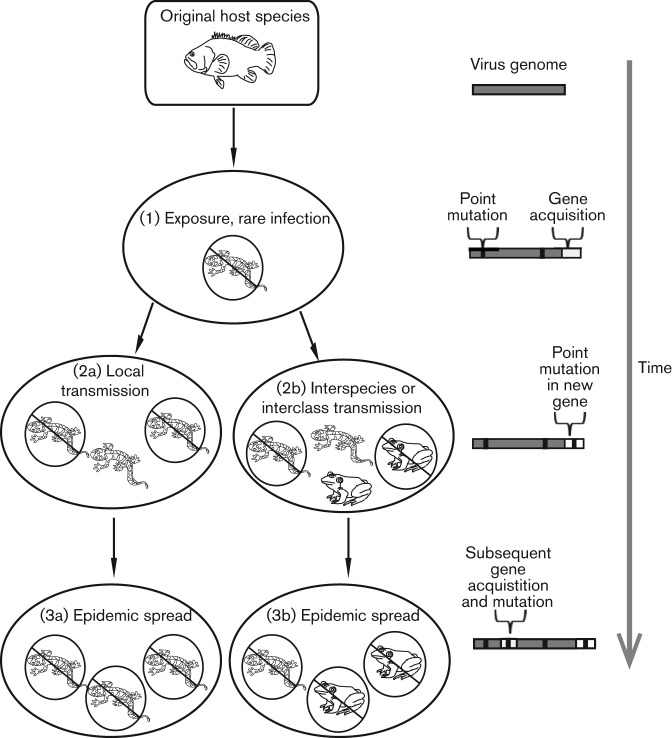Fig. 1.
A model for ranavirus host switching within and between vertebrate classes. During cross-species transmission, evolution of a viral genome makes the virus increasingly compatible with the genetic background of new host species, and may facilitate interclass transmission. Mutations (black bars) and the acquisition of new genes (open rectangles) may work to progressively increase the compatibility between the ranavirus genome and new host species. Two separate scenarios that include point mutations occurring throughout the original and newly acquired regions of the genome can lead to transmission within species (2a) or between vertebrate classes (2b) over time. The acquisition of novel genes in the ranavirus genome and subsequent mutations within those genes most likely play a fundamental role in the ranavirus host-switching process.

